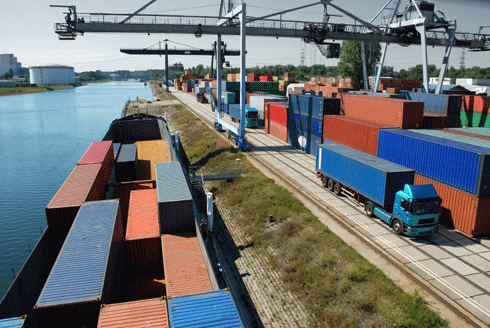
|
Published: 1 September 2014
Missing heat may be hiding deep in the Atlantic
More than a dozen theories have now been proposed for the so-called global warming hiatus, ranging from air pollution to volcanoes to sunspots. A new study shows that the heat absent from the surface is plunging deep in the north and south Atlantic Ocean, and is part of a naturally occurring cycle.

|
|
Atlantic Ocean waves crash on the shore. Credit:
Kim Seng CC BY-NC-ND 2.0
|
According to the University of Washington (UW) study, just published in Science, subsurface ocean warming explains why global average air temperatures have flatlined since 1999 despite greenhouse gases trapping more solar heat at the Earth’s surface.
‘Every week there’s a new explanation of the hiatus,’ said corresponding author Ka-Kit Tung, a UW professor of applied mathematics and adjunct faculty member in atmospheric sciences.
‘Many of the earlier papers had necessarily focused on symptoms at the surface of the Earth, where we see many different and related phenomena. We looked at observations in the ocean to try to find the underlying cause.’
The results show that a slow-moving current in the Atlantic, which carries heat between the two poles, sped up earlier this century to draw heat down to 1500 metres.
Tung and co-author, Xianyao Chen of the Ocean University of China, used recent observations of deep-sea temperatures from Argo floats, which sample the water to a depth of 2000 metres. The data show an increase in heat sinking around 1999, when the rapid warming of the 20th century stopped.
‘There are recurrent cycles that are salinity-driven that can store heat deep in the Atlantic and Southern oceans,’ Prof Tung said. ‘After 30 years of rapid warming in the warm phase, now it’s time for the cool phase.’
In an earlier study, the researchers proposed that rapid warming in the last two and a half decades of the 20th century was roughly half due to global warming and half to the natural Atlantic Ocean cycle that kept more heat near the surface. When observations show the ocean cycle flipped, in about 2000, the current began to draw heat deeper into the ocean, working to counteract human-driven warming.
The cycle starts when saltier, denser water at the surface northern part of the Atlantic, near Iceland, causes the water to sink. This changes the speed of the huge current in the Atlantic Ocean that circulates heat throughout the planet.
‘When it’s heavy water on top of light water, it just plunges very fast and takes heat with it,’ Tung said.
The oscillations have a natural switch. During the warm period, faster currents cause more tropical water to travel to the North Atlantic, warming both the surface and the deep water. At the surface this warming melts ice. This slowly makes the surface water there less dense and after a few decades puts the brakes on the circulation, setting off a 30-year cooling phase.
However, Prof Tung pointed out that now, ‘we are not talking about a normal situation because there are so many other things happening due to climate change’.
Source: University of Washington



